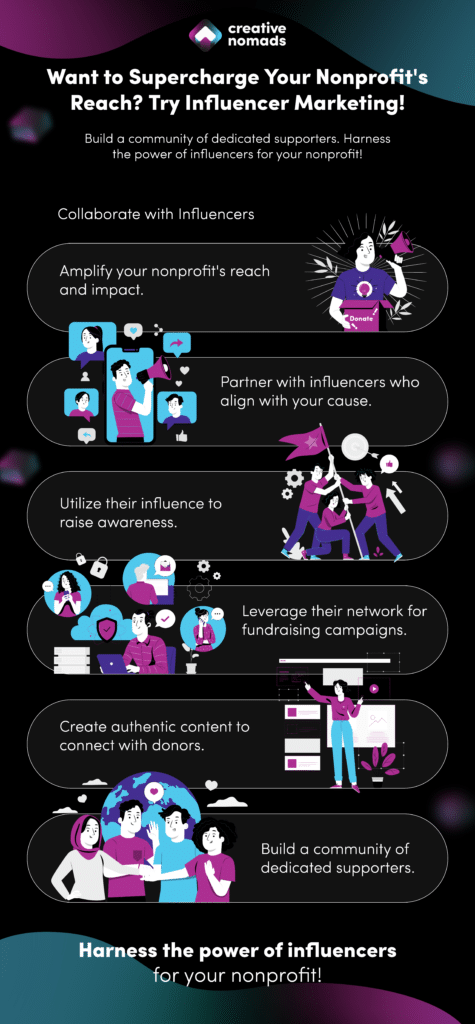Influencer marketing has totally shifted how brands connect with people. Instead of shouting at the crowd, you get to team up with voices that folks already trust. If you want your message to actually land, weaving in smart marketing strategies with influencers can really boost your reach and spark more genuine engagement online.
To make influencer marketing work, you’ve got to know what you want to achieve and keep your approach in sync with your bigger marketing plan. Picking influencers who actually fit your vibe and building real campaigns can help you reach more people who care. Figuring out how to work with influencers as part of your digital mix? That can breathe new life into your outreach and help you make new connections.
The Power of Influence
Influencers shape what people care about—and what they buy—by building trust with their followers through honest content. When someone you like or admire recommends something, it just feels more real than a slick ad, doesn’t it?
Social media influence works because of social proof. People read reviews and watch influencers’ experiences before buying anything. That kind of transparency just makes it easier to feel good about your choices, especially when influencers keep it honest.
Celebrity endorsements are flashy, sure, but smaller influencers often build tighter loyalty. Their followers actually listen because the relationship feels more real—there’s this authenticity that big names sometimes miss. That trust can move the needle, whether you’re raising awareness or driving sales.
If you’re reviewing influencer strategies, stay focused on clear, open communication. The best results come when there’s actual trust and transparency between the influencer and their audience.
| Key Elements of Influence | Why It Matters |
|---|---|
| Authenticity | Builds trust and loyalty |
| Social Proof | Validates purchase choices |
| Transparency | Creates honest connections |
| Product Reviews | Guides consumer decisions |
Working with influencers who genuinely share your values makes your message hit harder. Their followers pay attention because they believe what the influencer says. That’s how you shape opinions and inspire people to do something real.
Tapping into the Microcosm of Influence
Micro-influencers—those with a few thousand up to about 100,000 followers—keep things personal. Their audience trusts them because their posts feel like real life, not ads.
Working with micro-influencers lets you zero in on specific demographics. They’re great for reaching the people who actually care about your message. Plus, they usually get more likes, comments, and shares than the huge accounts do.
Micro- and nano-influencers are just more approachable. You don’t need a massive budget, and you’re more likely to get a real partnership going. It’s less about big numbers and more about authentic collaboration.
Quick look at the types:
| Influencer Type | Followers Range | Engagement Level | Best for |
|---|---|---|---|
| Nano Influencers | Less than 1,000 | Very High | Hyper-local and niche groups |
| Micro-Influencers | 1,000 to 100,000 | High | Targeted, engaged audiences |
| Macro Influencers | 100,000 to 1 million | Medium | Broader reach, less intimacy |
| Mega/Celebrity | Over 1 million | Lower per follower | Mass awareness campaigns |
With micro-influencers, you’re not just chasing stats—you’re building real connections with people who genuinely care. If you want more on this, check out Creative Nomads.
Choosing the Right Influencers
1. Aligning with Purpose
Find influencers who actually care about your nonprofit’s mission. When their values match yours, their support just feels right to your audience. That kind of fit leads to better engagement and trust. Don’t get distracted by big follower counts if the influencer isn’t really into your cause—authenticity always wins here.
2. The Art of Research
Take your time to find influencers who fit your brand and audience. Check out their socials, blogs, whatever they’ve got. Sure, follower count matters, but engagement is where the real story is. Tools can help you spot fake followers or inflated numbers, so don’t skip that step. Look at what kind of content they post—does it match your nonprofit’s style?
| What to Check | Why It Matters |
|---|---|
| Follower count | Indicates reach but not always engagement |
| Engagement rates | Shows audience interested in their content |
| Content tone & style | Must fit with your brand personality |
| Past collaborations | Signals professionalism and reliability |
| Cause alignment | Ensures true fit with your nonprofit’s values |
3. It’s a Match: Building Meaningful Partnerships
When you reach out, make it personal. Show you know their work and explain why teaming up makes sense for both sides. Think long-term, not just a single post. Let them know how this can boost your brand and make a difference together. Be respectful of their platform and communicate clearly—they’ll be much more likely to say yes and work with you in a real way.
Creating Impactful Influencer Campaigns
● Crafting a Powerful Narrative:
Your campaign needs a story that actually resonates. Use real emotions and personal stories to make your posts and influencer content relatable. Show how your cause changes lives or solves real problems. That’s what makes people care and want to get involved.
Mix up your approach on different platforms—short videos, written posts, whatever fits. Unboxing videos or tutorials can show your product or service in action and keep things interesting. Just keep it real; followers can spot fake a mile away.
● Unleashing the Creative Juices:
Let your influencers do their thing. They know their audience best, so give them space to add their own spin. That’s how you get content that actually clicks.
Try different formats—live streams, interactive posts, collaborations. User-generated content (UGC) is gold for trust, since it’s real people sharing real opinions. Just keep an eye on quality so sponsored stuff still feels natural and valuable.
Switch things up across platforms and content types. Don’t be afraid to experiment until you find what really works for your goals.
● Call to Action, Activate!
Every post should make it super clear what you want people to do next. Whether it’s checking out your site, signing up, or sharing, your call to action should stand out.
Keep CTAs simple and put links or buttons where they’re easy to find. That’s how you turn interest into real results. Every video, post, or story should wrap up with a clear step for your audience.
| Key Tips for Impactful Campaigns |
|---|
| Connect emotionally through stories |
| Encourage influencer creativity |
| Use diverse content types and platforms |
| Provide clear, actionable CTAs |
Amplifying Your Reach
Let’s be real: getting your nonprofit’s message out there isn’t easy. But when you tap into influencers on TikTok, YouTube, Facebook, or Instagram, you suddenly have access to audiences you might never reach otherwise. These folks already have trust and attention—why not borrow a little of that spotlight?
Don’t just post and ghost. Respond to comments, hit that like button, share posts—show up for your audience. The more you interact, the more people notice, and your message naturally spreads further.
Teaming up with several influencers who genuinely care about your cause? That’s where things get interesting. When you collaborate with people who reach different (but related) audiences, you get a ripple effect—your impact multiplies. Cross-promotion isn’t just a buzzword; it’s actually how you grow brand awareness across all sorts of communities.
Keep an eye on key performance indicators (KPIs) like engagement rates, click-throughs, conversions, and donations. Tracking these numbers gives you a sense of what’s working and what’s just… not. Adjust as you go—there’s no perfect formula.
Relationships matter, too. If you want influencers to stick around, show some gratitude and give honest feedback. Long-term partnerships almost always lead to better results and steady growth. It’s not just about one campaign—it’s about building something that lasts.
| Metric | Why It Matters | How to Track |
|---|---|---|
| Engagement Rates | Measures audience interaction | Likes, comments, shares |
| Click-Through Rates | Shows interest in your links | Link clicks |
| Conversions | Tracks actions like donations or sign-ups | Sales or signup numbers |
| Brand Awareness | Increases visibility and recognition | Mentions and follower growth |
If you’re serious about expanding your reach and making a bigger splash in social commerce, these strategies are worth your time.
Empowering Your Nonprofit’s Journey: Unlocking the Potential of Influencer Marketing
Influencer marketing is about sharing stories that actually mean something. When you work with the right people, your message travels farther and feels more genuine. You’ll find it’s a lot easier to build trust and get support when you connect with audiences who already care—or at least, are open to caring—about your mission.
Key Steps to Consider:
- Find influencers who get what you’re about
- Keep your messaging honest and straightforward
- Encourage real, two-way engagement
Honestly, these steps can make a huge difference.
Frequently Asked Questions
What are the 3 R’s of influencer marketing?
The 3 R’s are pretty much your guideposts when picking influencers:
- Relevance: Is their content a good fit for your brand and audience?
- Reach: How many people could they potentially influence?
- Resonance: Do they actually inspire their followers to care or act?
Focus here and you’ll set yourself up for better results, no question.
What are the 4 M’s of influencer marketing?
The 4 M’s break down the basics of running a campaign:
| M | Meaning |
|---|---|
| Message | What you want to say |
| Market | The people you’re trying to reach |
| Media | Which platforms you’ll use |
| Measurement | How you’ll track what’s working |
Keeping these in mind helps you stay on track and actually hit your goals.
How does authenticity impact the success of influencer collaborations?
Authenticity is everything. If an influencer’s message feels honest, people listen—and they might even act. But if it comes off as fake or forced? Folks tune out, and your brand can take a hit.
Genuine partnerships always go further. People know when something’s real, and that’s what sticks.
How impactful is influencer marketing?
Influencer marketing can increase your brand awareness, website visits, and sales. It usually outperforms traditional ads—let’s be real, people just trust influencers more these days. Plus, you might see better engagement and fresher content when you team up with the right creators.



